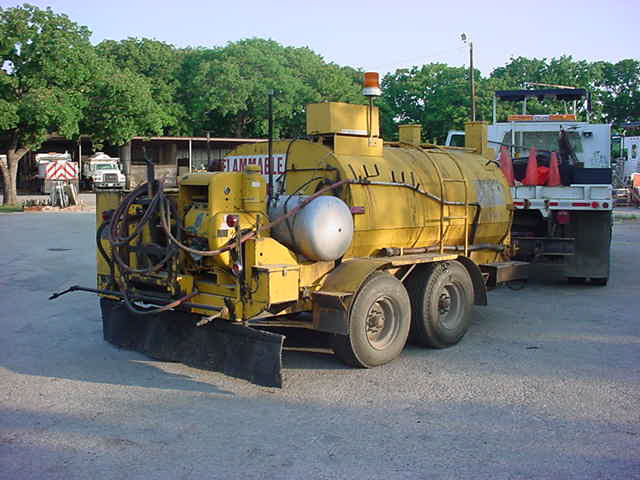Distributor Circulation and Pumping System
All asphalt distributors must have a power-driven pump to spray asphalt under pressure onto the roadway. The pumps also serve to provide a circulation system. There are two systems commonly used to supply pressure to the spray circulation system. One system has a separate engine mounted at the rear of the tank. This engine supplies power to the pump only. The other system uses power from the truck engine to operate the pump. This is called a hydrostatic distributor system as seen in Figure 7‑8. A truck-mounted asphalt distributor is shown in Figure 7‑9 and a trailer-mounted distributor is shown in Figure 7‑10.

Figure 7-8. Hydrostatic Distributor Located at Front of Truck.

Figure 7-9. Truck-Mounted Asphalt Distributor.

Figure 7-10. Trailer-Mounted Asphalt Distributor.
Function.
In addition to providing the power to spray asphalt binder on the road, the pump provides power to perform the following functions:- Circulate the asphalt throughout the tank. This is necessary to prevent asphalt from burning if it remained next to the flues for an extended period. Also, it will prevent asphalt from remaining near the skin of the tank long enough to cool and harden.
- Circulate asphalt through the spray bar and bring unused asphalt back into the tank. This will prevent asphalt from remaining in the spray bar long enough to cool, harden, and clog the spray nozzles.
- Pump unused asphalt out of the distributor.
- Pump from one storage tank to another. It may be used as an auxiliary pump to transfer asphalt from one tank to another.
- Fill the distributor tank. If a storage tank, heater unit, or transporter unit is not equipped with a pump, the distributor spray pump may be used to fill the distributor tank.